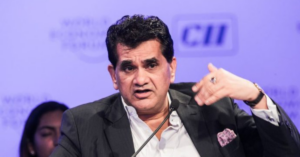
Typically, investors don’t take a board seat until you raise your first equity round—which means that it could be *years* before you have a real board meeting:
-
A year of nights/weekends work researching, prototyping, and fundraising.
-
You raise your pre-seed round and if you’re lucky and good, you can get to an equity round in 12-18 months. Many people extend this round and don’t get there for two years.
Until that point, how do you create the accountability necessary to stay on track and achieve your goals?
First off, many founders don’t really feel the need to have external accountability. It makes sense—to be a sounder in the first place means having a strong sense of agency and believing in your ability to manifest something out of nothing without a lot of help.
Not only that, founders get a lot of warnings from other founders about “losing control” and to be careful about ceding too much power to investors.
I’ll let you in on a little secret. Investors don’t actually like to do more work than necessary—and replacing a founding team is a lot of work. In an ideal world, we check in every now and then and the founder is completely on top of everything they’re doing, shares enough reporting to indicate that, and is totally self-sufficient.
That’s the founder we want you to be so we’re able to spend more time kitesurfing, microdosing, or tweeting our misguided libertarian leanings in the face of a crypto market losing billions of investor capital thanks to grossly inadequate regulation. 🙂
So trust me when I say we really only get up in your grill when we feel like it’s in the best interest of the company, our investment, and yours too.
Still, most founders wouldn’t assume to involve investors and advisors in a regular “board-like” meeting if they didn’t have to—and even those that do may not know how to run it or what to prepare for it.
I’ll make it simple. The goals of such a meeting are the following:
-
Give others enough information to form an adequate enough and objective picture of the business in order to check your blind spots and offer advice or other kinds of assitance (like intros to folks who have been there before or have the right skills to pitch in).
-
To lay the groundwork for accountability—where you say what your plans are and you can all huddle around your performance against that.
The structure of the meeting should follow some kind of document. When you first start your company, you’re not going to have much in the way of data or projections to run everyone through—so it might just be a bulleted agenda.
Very quickly, those bullets turn into a few things:
-
One or more hypotheses.
-
Goals for early efforts to prove or disprove your hypotheses.
-
Metrics around these efforts.
For example, you may decide that a small business needs a widget like yours (hypothesis) so you outbound to 100 of them (goals) with a vaporware deck to see if you could sell some pre-orders. Whether or not you were successful can be measured with not only objective metrics on the outcomes but also on the inputs and the effort. It’s really important that you not only produce successful results but that you find a way to scale the efforts and that you can make it profitable at some point—so you have to track both ends of the equation.
Some efforts don’t have more complicated metrics than just, “Did this work, yes, no, or still in process?” It’s ok to just put traffic light circles next to a list of the tasks you said you’d be doing last time.
Over time, you’ll start building up more and more sophisticated ways of tracking and your reports will start to subdivide into functional areas like marketing, product development, and financials (when you have dedicated investor money or a limited pool of your own capital you’ve decided to invest).
A lot of founders have wrestled with the question of who should even be in these meetings if you don’t have any action board members? How many is too many, for example?
Here are the two pre-equity/institutional investment phases of the company and who I would suggest putting around your table on a regular basis:
-
Nights/weekends/pre-investment: When you don’t have any outside capital I recommend meeting up with three advisors on a regular basis. You can pay them in dollars, sometimes in pizza, and if your company becomes a real thing, they may want small chunks of equity (think 0.10%). The three backgrounds I suggest are someone who knows your specific space, someone who generally understands various types of business models and lastly, but perhaps most important, a trusted friend who will call out your BS.
-
When you actually start to get some angels or small funds invested in either an angel or pre-seed round, you might choose the most useful person from the previous three to keep going as an advisor or start fresh. Either way, adding a couple of invested parties who do this on a full-time basis can be enormously helpful. For one, they have the bandwidth and network to actually be really helpful. Two, doing this for a living means they’ve seen a ton of patterns for success and failure and can help guide you to the ones that are relevant for your business. Typically in a pre-seed round, you’ll find that 1 or 2 of your investors enjoy being active with their portfolio companies and can add the most value. Don’t force an investor who isn’t used to playing this role to meet up with you, because it’s not going to be a great use of either of your time.
I find that the best meetings with my founders include other investors. I’m not a fan of taking separate meetings with each active investor—because a founder really does need a consensus and a strong signal to rely on instead of conflicting feedback. I find that when multiple active investors are in the same room, they can quickly coalesce around some unified feedback given particular parameters—which cuts down on founder confusion and founder time.
Whatever you do, I’ll say this. Investors are generally interested in your success, but I also understand how the stress of scrutiny and the fear of having all these new people to answer to can be really overwhelming. It’s totally natural for your instinct to tell you to be protective. You may get some counsel from lawyers and others to do the same thing—to create walls and distance. In my experience, that never works out—because along the way inevitable missteps start to spiral when left unchecked, or founders fall down rabbit holes they never should have gone down more then two steps in the first place.
Instead of protecting against your investors—find a way to channel their knowledge and energy in a way that works for you—where you can have a productive, informed back and forth where you feel challenged but not attacked and they feel like they have a space to opine and to be heard, but that you retain ultimate control over direction. That’s where both sides get the most out of meeting.










